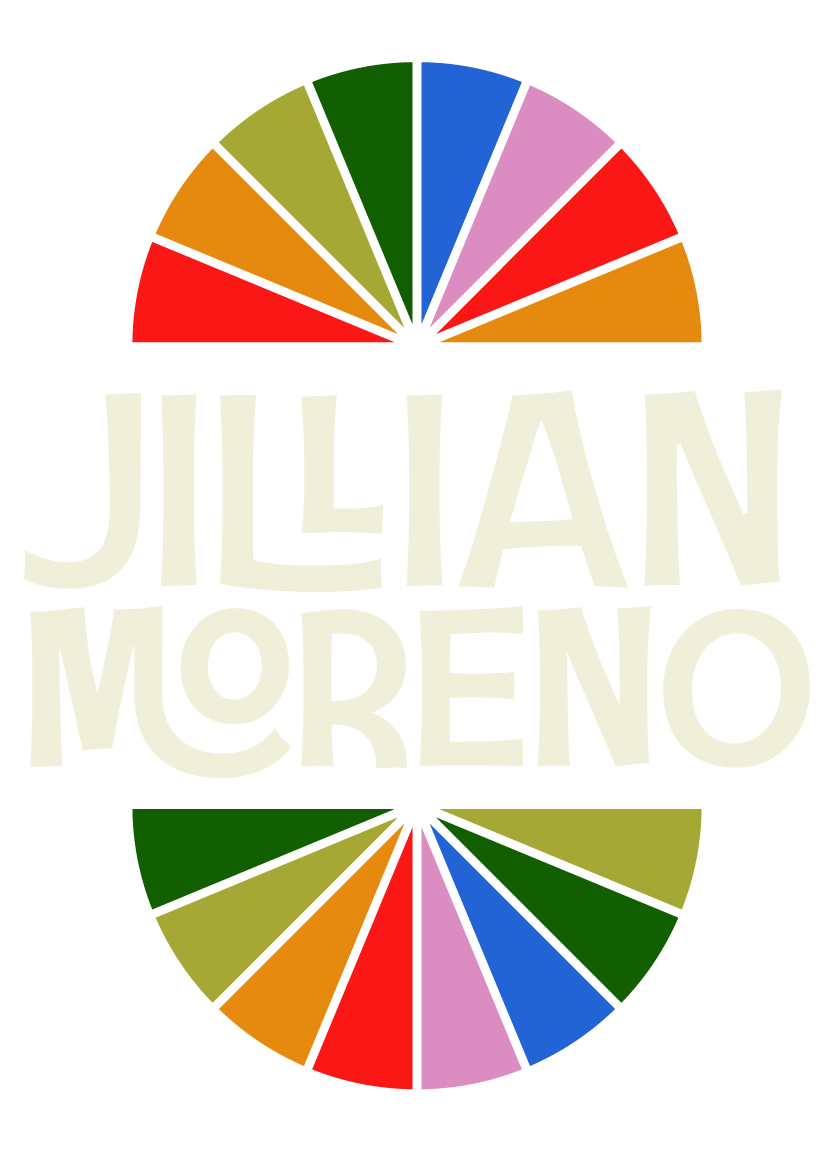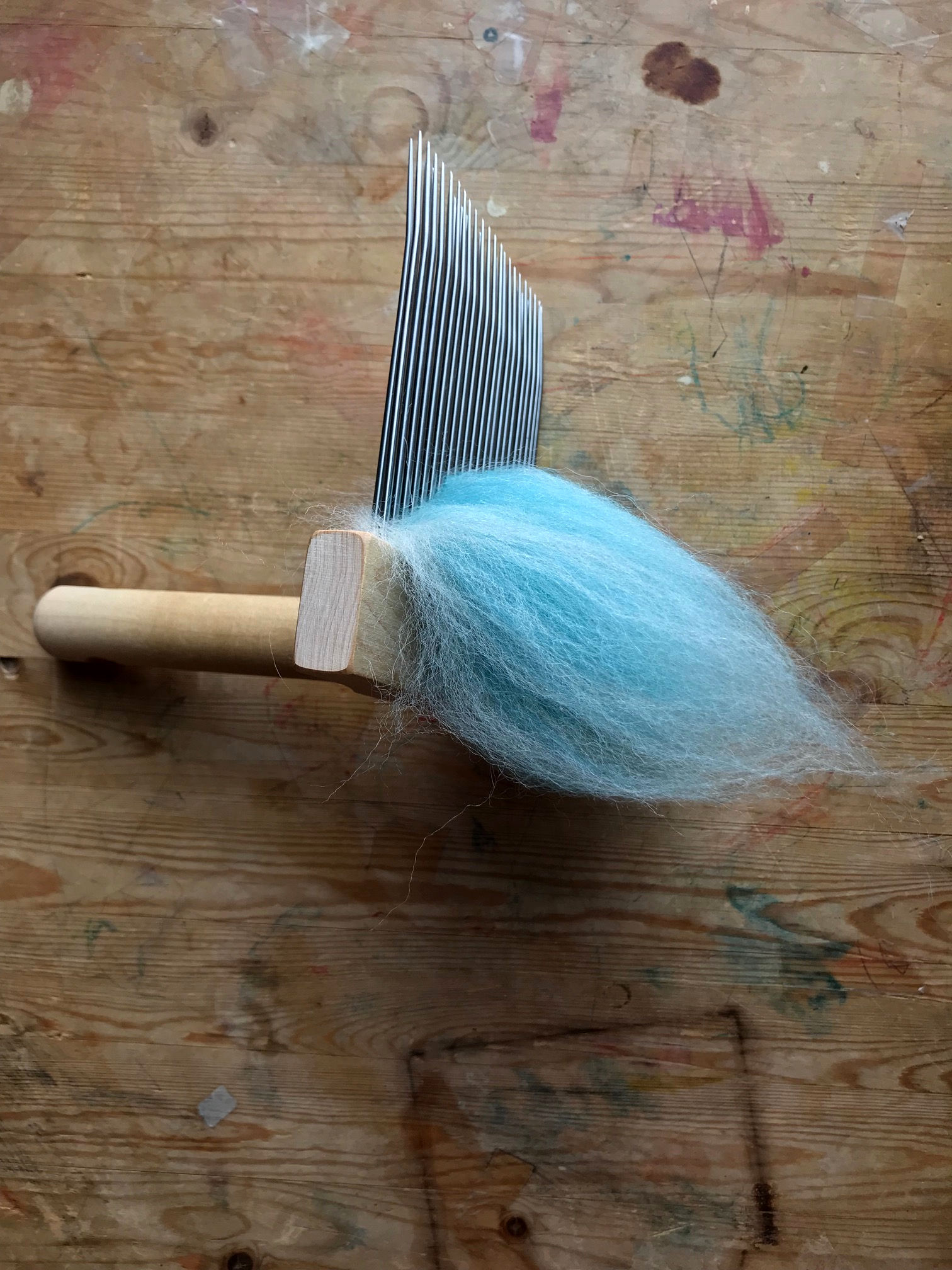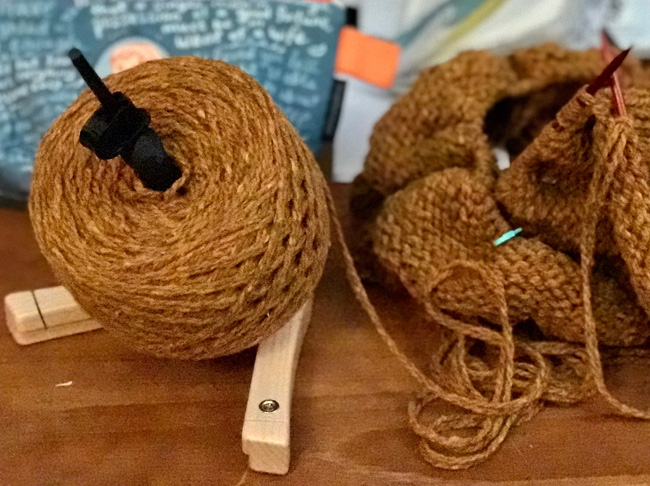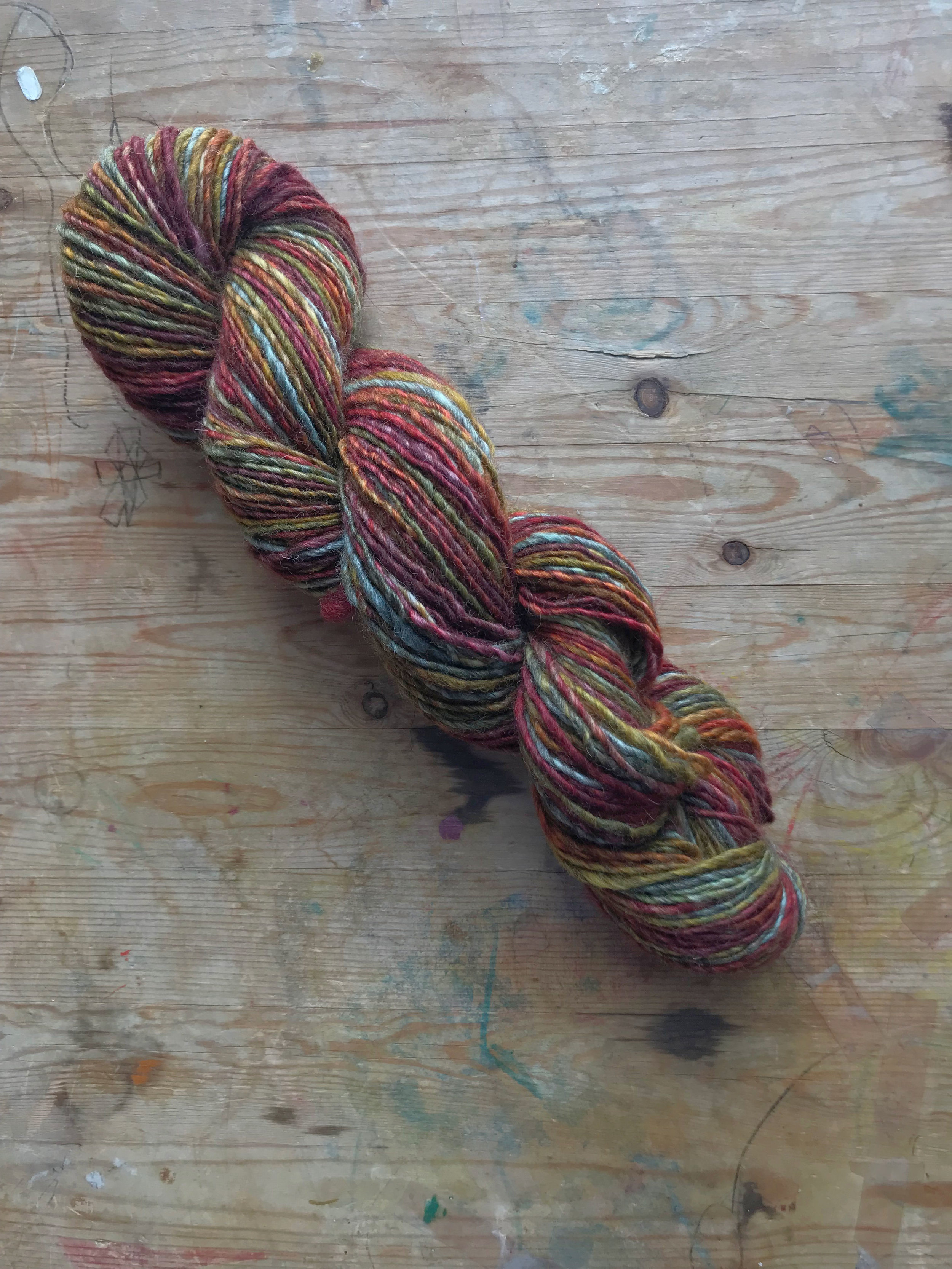Fabulous teaching photos by Ann Krieg!
I taught at Susan’s Fiber Shop retreat this past weekend. We cozied up in a hotel while the temps outside dipped below zero.
A whole bunch of spinners filled a ballroom and some of them gathered round while a did a blending board demo. A few more took classes with me for the next two days.
We had a great time, they were skilled spinners with a lot of questions. We covered our class material and a lot more.
There was a field trip one afternoon to Susan’s Fiber Shop. Holy cow!
It’s giant and there is everything a fiber fanatic would want, knitting yarn, spinning fiber, beads, weaving yarn, and so many books.
The book section is biggest I’ve seen in a shop. She has new books and a lot of out of print books.
It was a great way to spend the afternoon!
Then there’s was pie.
The spinners of Wisconsin whisked me away to the Nordske Nook where I had a slice of lingonberry sour cream. It was divine.
















